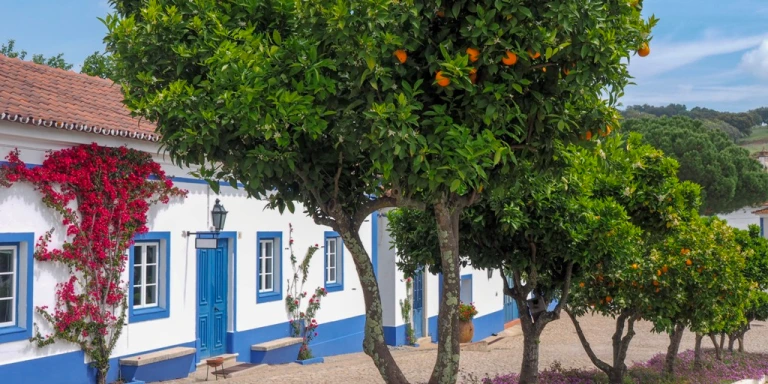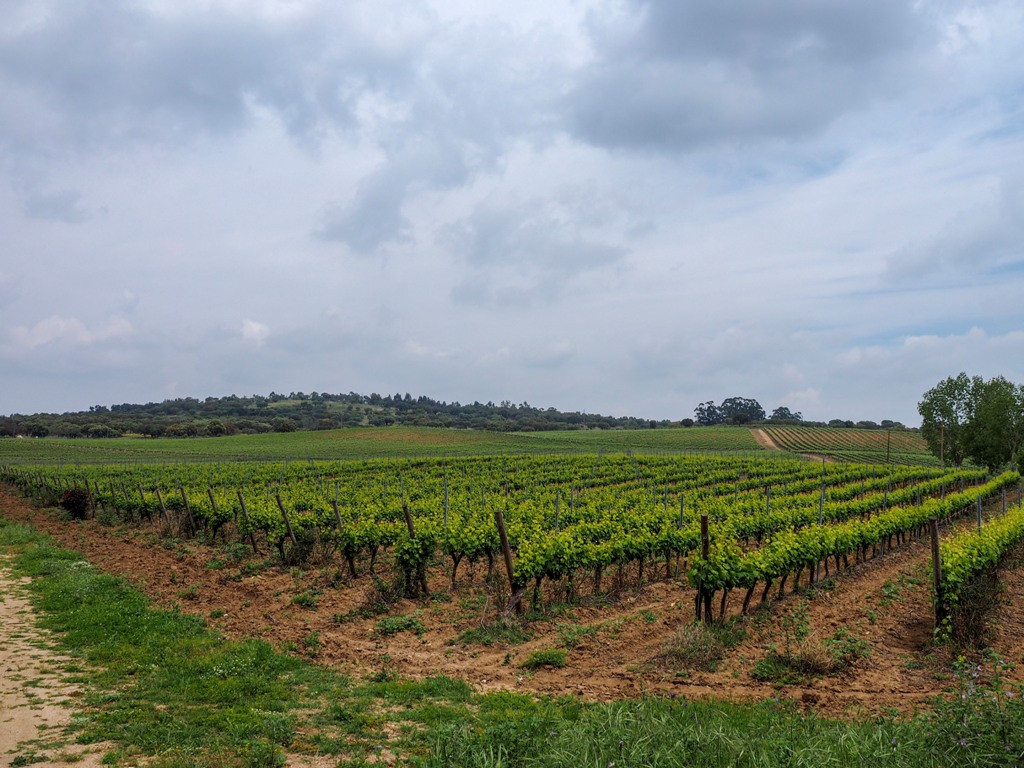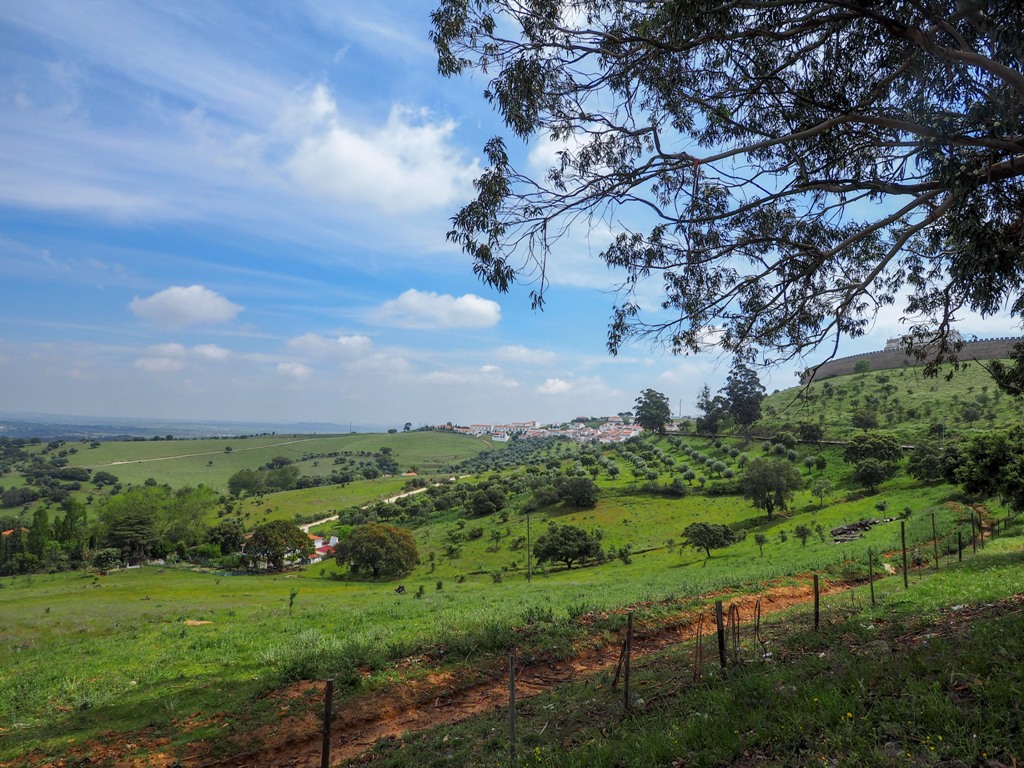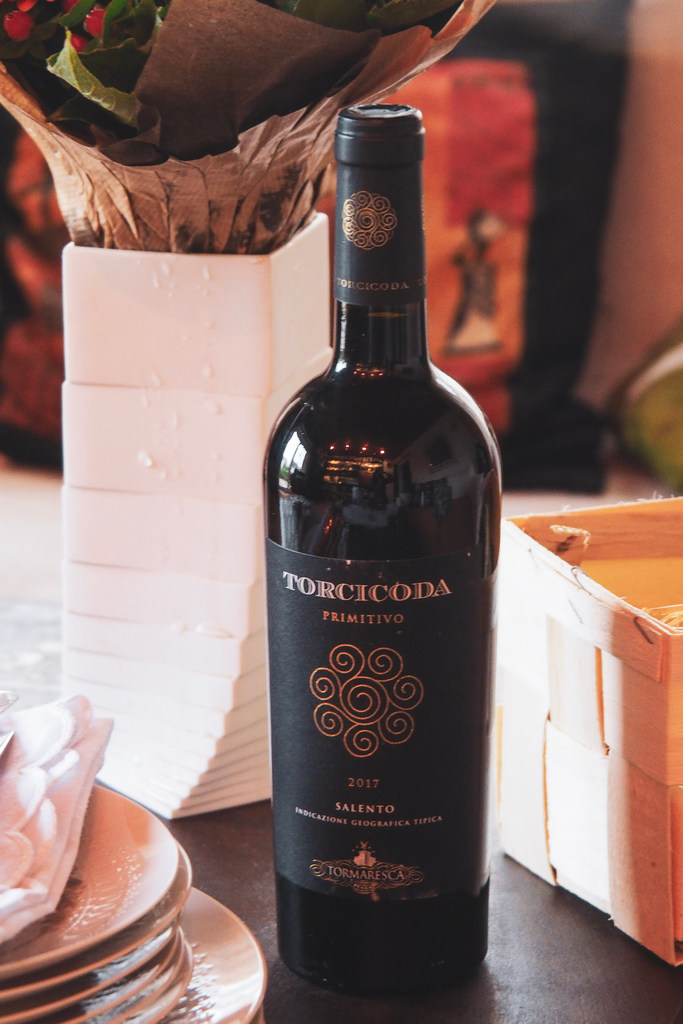European Under-The-Radar Wine Regions To Visit Next

The 10 lesser-known European wine regions to put on your wine travel bucket list
Europe is home to some of the world’s most renowned wine regions. Just think of Bordeaux (the perhaps most acclaimed winemaking region in the world), Tuscany or Rioja all standing for some of the best wines in the world, and certainly popular travel destinations.
Beyond these world-famous regions, wine is made in regions often largely unknown outside of their own countries. Often, these regions produce more simple wines which are mostly consumed locally. However, improved winemaking techniques and in some cases climate change leading to better growing (or rather better ripening) conditions of grapes have boasted the quality of wine across the board.
Today, there are many under-the-radar wine regions making excellent wines from indigenous grape varieties, with the wines still largely unavailable beyond the borders of their own region or at least beyond the country they belong to.

Clearly, the list of those lesser-known European wine regions which are worth a visit could go on and on. But one must start somewhere, right? Therefore, I have put together a list of my current Top 10 under-the-radar wine regions in Europe, based on quality and/or uniqueness of local wines, attractiveness beyond wine, and state of the local food and hospitality.
If you are keen to explore some of Europe’s lesser-know wine regions, tasting excellent wines along the way, each of the regions below are well worth being put on your wine travel bucket list.
10 lesser-known European wine regions worth travelling to
If you love to explore wine regions still largely undisturbed by larger crowds, or you want to learn more about regional wines not widely available outside of the region’s where they are made, below I am highlighting ten exciting lesser-known European wine regions, from the Alentejo in Portugal to Puglia in Italy. I will draw your attention to each regions flagship wines to try, local wineries worth visiting and what else makes the regions intriguing places to visit beyond wine.
Alentejo, Portugal
In recent years, Portugal’s Douro Valley, an UNESCO World Heritage Site, has become one of the most popular European wine tourism destinations. Yet beyond the breathtakingly beautiful Douro Valley, wine is grown in several other regions, and the quality of these wines has risen significantly over the past decade.
What makes Portugal stand out as an intriguing winegrowing country is the sheer number of grape varieties grown in this relatively small country. Around 370 different grapes are currently cultivated, of which around 250 are indigenous. It is therefore not uncommon the find a wide range of different wines made from local indigenous grapes in the various regions.

The largest wine region within Portugal, the Alentejo starts just about one hour’s drive time southeast of Lisbon and stretches all the way down to the Algarve coast.
Historically one of the poorest regions of Portugal, the country’s wealthy had established large farms and wine estates here, which had been handed down in the family over generations. Today, many of these estates are sizable wineries making excellent wines while they have also taken to wine tourism. From wine tasting to vineyard and winery tours, on-site dining opportunities, the region is slowly but surely establishing itself as a great place for the wine-interested traveller. On top, the Alentejo boasts a good (and growing) number of beautiful boutique winery hotels, offering luxury stays combined with awesome wine experiences.
Beyond wine, the Alentejo is characterized by a vast landscape of gently rolling hills, olive groves, cork trees, whitewashed historic hilltop villages, ancient ruins, fortresses, and cathedrals, along with stunning beaches. Evora, the regions capital city is considered one of Europe’s hottest hidden gems.
And finally, called the food basket of Portugal, the Alentejo is home to an amazing range of delicious food, including the regions iconic black pork (the equivalent to the Spanish black pigs fed exclusively on acorns), wild boar, salt cod, sheep’s cheese, olives, wild mushrooms and asparagus. Thus, dining in the Alentejo is almost exclusively farm-to-table, seasonal and a perfect match to local wines.
Local wines: The region is predominantly red wine territory and local red wines are made from various indigenous grapes such as Aragonez, Trincadeira, Toriga Nacional, Touriga Franca, and Alicante Bouschet. Red wines are typically full-bodied, intense, rich in tannins, and boasting aromas of wild berries and red fruits. Whites are smooth and refreshing, with aromas of tropical fruits.
Wineries to visit: Local wineries are typically called either Adega, Herdade, or Quinta all of which refer to a wine estate. Among the leading wineries in Alentejo are: Herdade do Malhadinha Nova, Adega da Cartuxa, Adega Major, Herdade dos Grous, Herdade do Sobroso, Herdade do Esporao, and Quinta do Crasto.
Alsace, France
The northeastern French region of Alsace, nestled in the foothills of the Rhine Valley next to the Vosges Mountain range and bordering the German Black Forest to the east, is well-known for its breathtakingly beautiful small historic villages. The most famous, Colmar and Strasbourg, are popular tourist destinations year-round while transforming into true Christmas wonderlands in December.
While Alsace in the 16th century made some of Europe’s most prized wines, today it is one of the lesser-know wine regions globally. Yet the region still makes excellent wines, and it is one of the leading European wine regions in organic winegrowing.
There are seven official grape varieties, of which only one is red (Pinot Noir). However, the region’s flagship wine remains Riesling, with a very own interpretation of the variety, distinct from Rieslings made in Germany.
Boasting the oldest wine route in France, the Route du Vin d’Alsace, there are many other wine-related adventures such as bike tours and marathons through the vineyards, along with various food and wine events. This is also a gastronomic bolthole with a total of 26 Michelin-star restaurants at the time of writing. Though the region also stands for excellent regional food including Flammkuchen (tarte flambée), choucroute garni (a local version of German Sauerkraut, prepared with fermented cabbage cooked in white wine, beer or cider), and Kugelhopf.
Local wines: The top wines of Alsace are the region’s dry, aromatic whites made from Riesling, Gewürztraminer, Muscat, and Pinot Gris. Also excellent are the local sparkling wines, called Crémant de Alsace.
Wineries to visit: Domaine Sant Remy, Domaine Jean-Louis Schoepfer, Domaine Eblin-Fuchs, Domaine Zind Humbrecht, Domaine Albert Mann, and Jean-Baptiste Adam.
Languedoc, France
Perched in the southeast of France, bordering Spain and the Pyrenees to the southwest and the famed French rosé wine region of Provence to the east, Languedoc-Roussillon is one of the largest regions in France. The region’s vineyard area is also the largest in France and a wide range of both international in indigenous grape varieties are grown. Yet as a wine region, Languedoc is still widely unknown outside of France.
With the region’s soils considered among the best in France for winegrowing, Languedoc has benefitted from an influx of young, innovative winemakers setting up small vineyards, many of which are strictly organic and/or biodynamic. The two leading grape varieties, Carignan and Cinsault, thrive in the hot Mediterranean local climate.
The landscape here is second to none with the lagoons of Peyriac-de-Mer home to large numbers of flamingos, long sandy beaches along the coast, while the Canal du Midi, the world’s oldest commercial canal, built in the 17th century and now an UNESCO World Heritage Site is popular for criss-crossing the area by boat. The historic cities of Montpellier, Perpignan, Nimes, Narbonne and Carcassonne are just a short drive from the vineyard areas.
Local wines: Wines from the red Carignan grape yield deep purple wines with intense tannins and fruit flavours, while the local Grenache-Syrah-Carignan red blend is softer, fruit-forward and more perfumed. Finally, the region is also making its own Crémant (French sparkling wine), the Crémant de Limoux. Look out for those labelled Blanquette de Limoux, which are made from the indigenous white Mauzac grape, and aged for a minimum of nine months on the lees.
Wineries to visit: Chateau Castigno, Chateau de Jonquières, Chateau de Lascaux, Chateau Rouquette-sur-Mer, Domaine La Madura, Chateau Ricardelle, and Chateau L’Hospitalet.
Podravje, Slovenia
Wine from Slovenia remains still largely under the radar, this small central European country is looking back at a long history of winemaking.
There are three major wine regions, Primorski in the west close to the Adriatic coast and the Italian border, Posavje in central Slovnia, a small winegrowing area still mostly producing lower quality wine, and finally, the largest wine region Podravje, in the east, bordering Austria.
Podravje is located around the towns of Maribor on the shores of Drava River and Ormoz. Maribor is also home to what is allegedly the oldest vineyard in the world (around 450 years) still growing grapes.
From a winegrowing perspective, however, the proximity to Austria and the Styria wine region is likely more noteworthy. Historically, the two regions were in fact part of the Austrian-Hungarian Empire, and thus belonged together. Many of the small local wineries, which have been handed down in the family over many generations, have vineyards on both sides of the border. Following Slovenia joining the European Union and the relaxation of country borders (in terms of travelling), today it is indeed often difficult to tell whether you are still in Podravje or already Styria in Austria.
The region is a predominantly white wine area, with Riesling, Welchriesling, Gewürztraminer, Müller-Thurgau, Pinot Gris, Pinot Blanc and Sauvignon Blanc all grown here.
Local wines: Quality of wines is still catching up internationally, but the region produces some very good quality Sauvignon Blancs. In addition, there are some interesting Chardonnay and Gewürztraminer.
Wineries to visit: Dveri Pax, Kobal Wines, Vino Gaube, Kogl, and Vino Valdhuber
Franciacorta, Italy
Champagne lovers should pay attention. Franciacorta, located halfway between Italy’s fashion capital Milan to the west and popular Lake Garda to the east produces the counties finest sparkling wines, using the traditional method. Thus, they are made in the same way as Champagne, with second fermentation taking place in the bottle. While sold at significantly lower prices, not few wine experts agree the quality is superb, rivalling the sparkling wines made in Champagne.

Located along the ancient Roman trade route known as Via Gallica, the region once was an important centre for trade and commerce. Later, it belonged to the Republic in Venice. In the 16th century then the area was given a tax-free status (curtes francae). The name Franciacorta is indeed said to be derived from the term.
The vineyard area stretches from idyllic Lake Iseo southwards, covering only around 3,000 hectares.
While small in size, Franciacorta boasts a beautiful lush green landscape, various historic convents and monasteries, and picturesque small historic villages while the UNESCO World Heritage cities of Brescia and Bergamo are just around the corner. On top, Franciacorta is a culinary bolthole and boasts excellent restaurants and various agritourismi (the Italian name for rural guesthouses and country hotels with a strong link to nature) and beautiful boutique hotels.
While sparkling wine production in the area goes back to the 16th century, the first modern Franciacorta sparkling wines were made around the 1960s, pioneered by local producer Berlucchi. Today, there are around 120 wineries in Franciacorta. For stellar wine tasting, follow the Strade del Vino Franciacorta wine route.
Local wines: While some still white and red wines are made in the region too, the vast majority are the stellar sparkling wines, made according to the traditional method. White Franciacorta sparkling wines are made from Chardonnay and Pinot Noir and the lowest quality classification are aged for a minimum of eighteen month while the highest quality (riserva) sparkling wines are aged for a minimum of sixty months. Rosé sparkling wines are also made. Many of the local wineries offer food and wine tastings.
Wineries to visit: Guido Berlucchi, Bellavista, Barone Pizzini, Ca’ del Bosco, Cavalleri, Le Cantorie, Ronco Calino, and Villa Crespia.
Puglia, Italy
This beautiful, sun-drenched region at the southern heel of Italy over the past few years has become increasingly popular with international travellers. Whitewashed coastal villages, the truly amazing local Trulli architecture (small round stone houses with distinctive conical roofs), endless olive groves, and large sandy beaches along with lots of sunshine makes the region a unique holiday destination.
More recently, Puglia has also made waves turning more and more of its historic Masserie into amazingly beautiful small luxury boutique hotels. These ancient farmhouses are located away from the busy beach areas, surrounded by large fields, olive groves and vineyards are the ideal places for travellers looking for more intimacy (most only have a small number of rooms), yet are looking for luxury and a connection to the surrounding nature.
While only few come here for vineyard visits in the first place even this is now slowly starting to change, and local wineries are following the move, opening their doors to visitors and establishing a range of wine experiences.

Local wines: The most noteworthy wines of Puglia are those from local native grapes such as Negroamaro, Primitivo (which in the U.S. is known as Zinfandel), Nero di Troia and Malvasia Nera, while Sangiovese is also widely planted. Meanwhile, white grapes include Verdeca, the most widely planted white grape along with Greco Bianco, Bombino Bianco, Fiano and Bianco d’Alessan. Sandy soils, high temperatures, and the nearby sea create red wines which are full-bodied, with intense fruit aromas, refreshing acidity and fine tannins, which pair well with a wide range of food. While red wines dominate, the region also produces excellent crisp, dry white wines which are easy to drink and pair well with seafood and pasta.
Wineries to visit: Masseria Monaci, Masseria li Veli, Antica Masseria Jorche, Candido, Cantina San Donaci, Due Palme, Leone de Castris, and Tormaresca (part of Antinori).
Pfalz, Germany
One of the most historic winegrowing countries in the world, Germany is certainly well-known for its excellent Riesling wines. While the steep vineyards of the Mosel Valley are likewise well-known and a popular destination for wine travellers. The Rheingau, adjacent to the UNESCO World Heritage Site of the Middle Rhine Valley, is perhaps the other German wine region best know by visitors. After all, it is home to several of the country’s oldest monastery wineries.

However, excellent wines are made in all of the 13 official German wine region, and all are awesome destinations to be explored during a trip. However, if you are new to German wine regions and are looking to explore some of the lesser-known ones, I recommend starting with the regions listed below.
Germany’s second largest wine region, located in the southwest of Germany between the Rhine River and Haard Mountain range is famous for its thousands of almond trees (the almond blossom season in March-April is attracting many visitors to the area each year), its beautiful small historic villages, and as a great culinary hotspot with a lot of influence from nearby France embedded in the traditional regional Palatinate cuisine. The Pfalz is also home to Germany’s oldest wine route, Deutsche Weinstrasse, running for 85 kilometres from Bockenheim to Schweigen on the border to Alsace.
Wines to taste: Known for its excellent white Riesling wines, lately the Pfalz is making waves for its increasingly excellent Pinot Noirs and Dornfelder too. Local Riesling wines are typically fuller-bodied and lower in acidity compared to those of the Mosel, with aromas of orchard fruits along with earthy and spicy notes. Meanwhile, Pinot Noir from the Pfalz region has recently gained much attention
Wineries to visits: Reichsrat von Buhl, Dr. Bürcklin-Wolf, Knipser, A. Christmann, Dr. von Basserman-Jordan Oliver Zeter, Friedrich Becker, Philip Kuhn and Von Winning.
Priorat, Spain
When you think of wine regions in Spain, Rioja will invariably come on top. Some of the country’s best wines are made here, and names like R. Lopez de Heredia, Marques de Riscal, or Muga will ring a bell with wine lovers all over the world. Yet, wine is made across all of Spain and for those keen to venture off the beaten track, offers some amazing choices.
Priorat, located in the province of Tarragona to the southwest of Barcelona is a region steeped in religious mystery. The name of the region is linked to the vision of a local shepherd, who claimed he saw angels descending from a heavenly ladder. Shortly after, the Carthusian monastery was founded on the site of said miracle, called Scala Dei, where the monks also planted the region’s first vineyards. Following the foundation of the monastery and the dominant role the monks played in the region at the time, the area become known as Priorato, the Spanish word for priory.
While today only ruins remain of the 12th century monastery, vines are still growing around the site. Nearby, one of the region’s oldest and leading wineries, the Cellers de Scala Dei, is located in several old buildings that once formed part of the monastery.
Characterized by a mountainous terrain, vineyards are mostly planted on steep, old terraces rising as high as 900 metres. Vineyards are still worked by hands, and its not uncommon to see mules and horses to assist vineyard workers.
Priorat boasts one of the most particular wine classifications not only in Spain but globally. Quality classification of the wines include the age of the vineyards, and the higher a wine is classified, the older the vines need to be.
Local wines: Around 95% of grapes grown in Priorat are red. Full-bodied red wines made from Garnacha and Carinena old vine grapes boast extensive tannins and alcohol, and intense aromas of licorice, tar, and brandied cherries.
Wineries to visit: Cellers de Scala Dei, Celler Cal Pla, Clos Erasmus, Clos Mogador, Ferrer Bobet, Mas Alta, Corbera d’Ebre, Falset, Vall Llach, and Vilabella.
Jerez, Spain
Talking of lesser-known Spanish wine regions worth to be explored, Jerez is certainly one that stands out in various ways. Perched in the southwestern-most corner of Spain, the historic towns of Jerez de la Frontera, Sanlucar de Barrameda, and El Puerto de Santa María are forming the so-called Sherry triangle. This is the only region in the world allowed to produce Sherry wines.
Jerez, or better Sherry was the first region in Spain awarded a DO (denominacion de origin) status in 1933. What sets Sherry away from other wines is not only the fact that it is a fortified wine. Sherry is made in a very unique way, using the solera system for aging the wine. Explained in a very simple wax, it’s a system where barrels are stacked above each other, with those on top holding the youngest wines. Meanwhile, the oldest wine will be in the lowest row, and it is from the lowest row Sherry will be withdrawn for bottling. However, the barrels will never be emptied completely. Only part of the wine will be withdrawn, and the barrel will than be topped up with wine withdrawn from the row above, while this barrel will then again be topped up with wine from the barrel sitting on top.
If you have visited a wine cellar before, heading to a wine cellar in Jerez, stacked with the towering solaras will be a quite different experience.
The historic city of Jerez boasts a beautiful historic centre, and is well known for its horse shows, flamenco and boasting an amazing culinary scene focusing on local produce, such as fresh seafood, roasted game, and of course the famous local Jamón de Iberico, tapas and sherry.
Local wines: There are also some still wines made in the area, and a recent change in wine laws is now allowing non-fermented wines with a certain level of alcohol being called sherry as well. However, a visit to Jerez means delving into the world of sherry. Starting with the young, easy drinking sherries Manzanilla and Fino, and climbing up the age and quality ranking to Amontillado, Palo cortado, Oloroso, Cream Sherry, and finally the best of the rest, Pedro Ximénez.
Wineries to visit: Bodegas Lustau, Bodegas William & Humbert, Bodegas Fundador, Fernando de Castilla, Bodegas Tio Pepe
England
To be honest, I am not sure it is still suitable to count the English wine country as a lesser-know wine region. In recent years, there has been indeed much hype around England’s sparkling wines. So much so that likely every wine lover these days is aware of – and perhaps has already tasted – English bubblies.
English sparkling wine has burst onto the scene from seemingly out of nowhere only few years ago. Offering a level of quality that took everybody by surprise, and yet at a closer look it was perhaps not that surprising at all. Climate change making the English summer warmer and drier, allowing grapes to ripen, is part of the game. Yet the major reason local winemakers can create sparkling wines rivelling champagne in style, taste and quality, is the white, chalky soil characteristic of the southern English countryside – and identical with the soils found in Champagne, France.
English vineyards are stretching through the picturesque countryside dotted with historic castles and beautiful manor houses, from near the English Channel in Kent to Sussex, Hampshire, and Dorset.
While the wine business is still at its infancy, English wineries have quickly taken to wine tourism, and those keen to explore the area and local wines will find a wide range of wine experiences, from wine tasting, vineyard hikes, and stays at local wineries.
Local wines: English sparkling wines offer a lot of similarities with champagne, though they have also some distinct characteristics. They are typically fresh with crisp acidity and aromas of citrus, apple, pear, and brioche along with floral and mineral notes.
Wineries to visit: Tinwood Estate, Hambledon Vineyard, Gusbourne Estate, Langham Wine Estate, Balfour Winery, Tillingham, and Chapel Down.